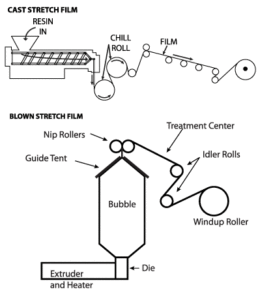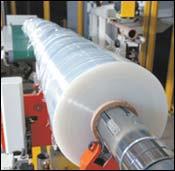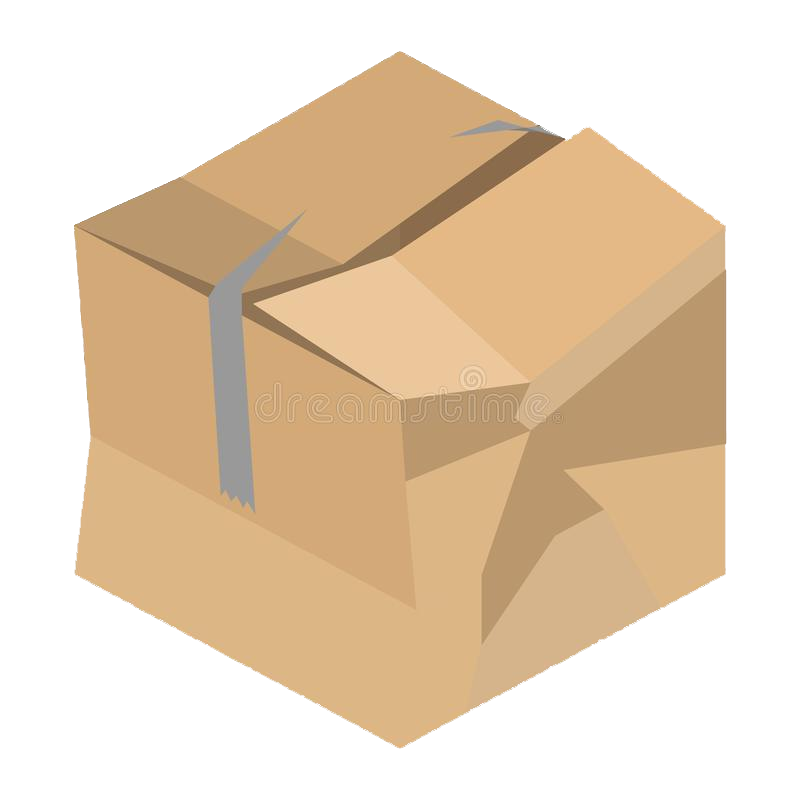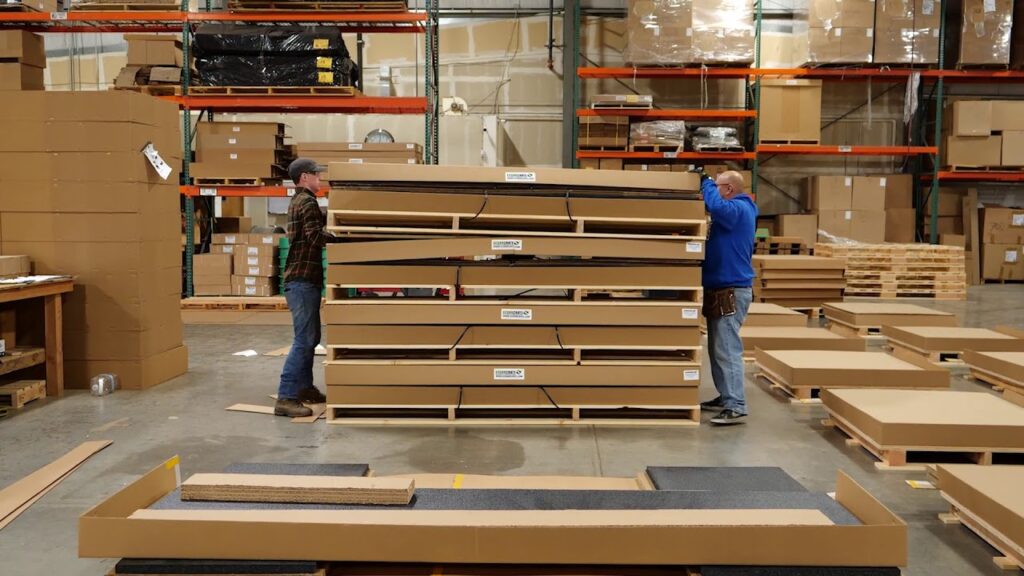Stretch film comes in varying gauges, lengths, chemical make-ups, colors and can be used in numerous applications. Not all stretch film works on all loads and for all applications. One interesting variable and starting point for stretch films is deciding between blown or cast manufacturing processes. But first, if you are unsure of the differences between shrink and stretch start with this blog post.
Blown stretch film is created by blowing heated resin out vertically into a bubble. The bubble is then transformed into rolls while it is cooled by the surrounding air. This simple animation shows the basics of the process. Alternatively, another way stretch film is manufactured is by feeding a sheet of heated resin along a rolling path with chilled rollers while the cooling solidifies the film. This process produces cast stretch film and like blown film is then turned into large master rolls. Check out this video showing the process.

Blown film is tougher and has less of a chance to puncture than cast. This occurs due to the slower cooling process, which allows the molecules in blown film to spread out as opposed to aligning in long lines like in cast. Blown film also has a higher level of cling (think Reynolds Wrap) than cast, making it stick to itself easier.
So, why would anyone use cast film? Cast stretch wrap has a clear, glossy finish allowing greater success with RFID and other scanning technology while blown film can be hazy and dull. Cast stretch film unwinds much quieter than blown. It is also easier to stretch and control the gauge with cast film.
Both films have great benefits for different applications.
Multiple variables can determine what film to use including the ones we talked about in this past blog post, but here are a few others when determining blown vs cast film:
- What type of machine is being used, if not applied by hand?
- What kind of load is being wrapped?
- Where does your skid go after leaving your dock? Is it temperature controlled?
- How is this skid transported and stored?
- How many variants of loads does your facility wrap?
- Do you use labels/barcodes under the film that need to be scanned?
Does your distributor ask you these types of questions and provide solutions based off of your answers?
If you are purchasing films based on the one with the cheapest price per roll, you may be surprised what kind of information and insight can be gained and the real savings you are missing out on. We represent several leaders in the market including Berry Plastics, Paragon Films, StretchTape, and Alliance Plastics with stock ranging from blown and cast hand and machine films, pre-stretch films, vented films, UVI, and specialty color films.




